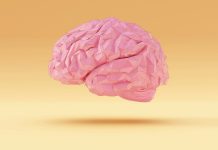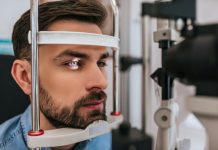
Scientists have made a groundbreaking discovery in the treatment of Alzheimer’s disease. They’ve found a way to help Alzheimer’s drugs enter the brain more quickly by temporarily opening its protective barrier.
This exciting development comes from a novel experiment conducted on just three patients. Yet, in the targeted areas of the brain, this new technology significantly increased the removal of Alzheimer’s hallmark brain-clogging plaque.
The experiment was led by Dr. Ali Rezai from West Virginia University’s Rockefeller Neuroscience Institute. The focus is on the blood-brain barrier, which acts like a protective shield around the brain.
While this barrier keeps harmful substances out, it also blocks many drugs meant for Alzheimer’s and other neurological diseases.
The challenge has always been to get enough medication into the brain without resorting to higher doses or longer treatment periods.
The solution? A technology called focused ultrasound, combined with microscopic bubbles injected into the bloodstream.
When sound waves are directed at a specific brain area using a helmet-like device, these microbubbles vibrate. This vibration creates tiny gaps in the blood-brain barrier, allowing medications to slip through.
An image provided by the WVU Rockefeller Neuroscience Institute shows the team planning this ultrasound treatment.
This method has been found safe in previous studies, with the tiny holes closing up within 48 hours. Now, Rezai’s team has taken this further by administering an Alzheimer’s drug at the same time as opening the barrier.
Many new Alzheimer’s drugs aim to clear the sticky protein beta-amyloid from the brain. They require intravenous infusions every few weeks for over a year.
Rezai’s team wondered: why not try to clear the plaques in just a few months? They administered monthly doses of Aduhelm, an Alzheimer’s drug, to three patients with mild Alzheimer’s for six months.
Alongside each dose, they used focused ultrasound to target amyloid-clogged parts of the brain.
PET scans before and after six months of treatment showed about 32% more plaque reduction in areas where the barrier was breached compared to other regions.
This finding, reported in the New England Journal of Medicine, indicates that the treatment may help Alzheimer’s drugs work more effectively.
However, Dr. Eliezer Masliah of the National Institute on Aging cautions that the study, while elegant, is too small to draw definitive conclusions. But he finds the data compelling and a catalyst for larger, more extensive studies.
Rezai is planning to start another small trial using a similar drug named Leqembi. The long-term goal is to conduct larger studies to see if combining focused ultrasound with Alzheimer’s drugs makes a significant difference for patients.
Masliah also notes the importance of monitoring for side effects, such as bleeding and swelling in the brain, which are rare but serious risks associated with these new drugs.
This research is not only promising for Alzheimer’s treatment but could also open doors for treating other conditions like brain tumors by breaching the blood-brain barrier.
It represents a significant step forward in treating neurological diseases and offers hope for millions affected by Alzheimer’s disease.
If you care about Alzheimer’s, please read studies about the likely cause of Alzheimer’s disease , and new non-drug treatment that could help prevent Alzheimer’s.
For more information about brain health, please see recent studies about diet that may help prevent Alzheimer’s, and results showing some dementia cases could be prevented by changing these 12 things.
The research findings can be found in New England Journal of Medicine.
Copyright © 2023 Knowridge Science Report. All rights reserved.



